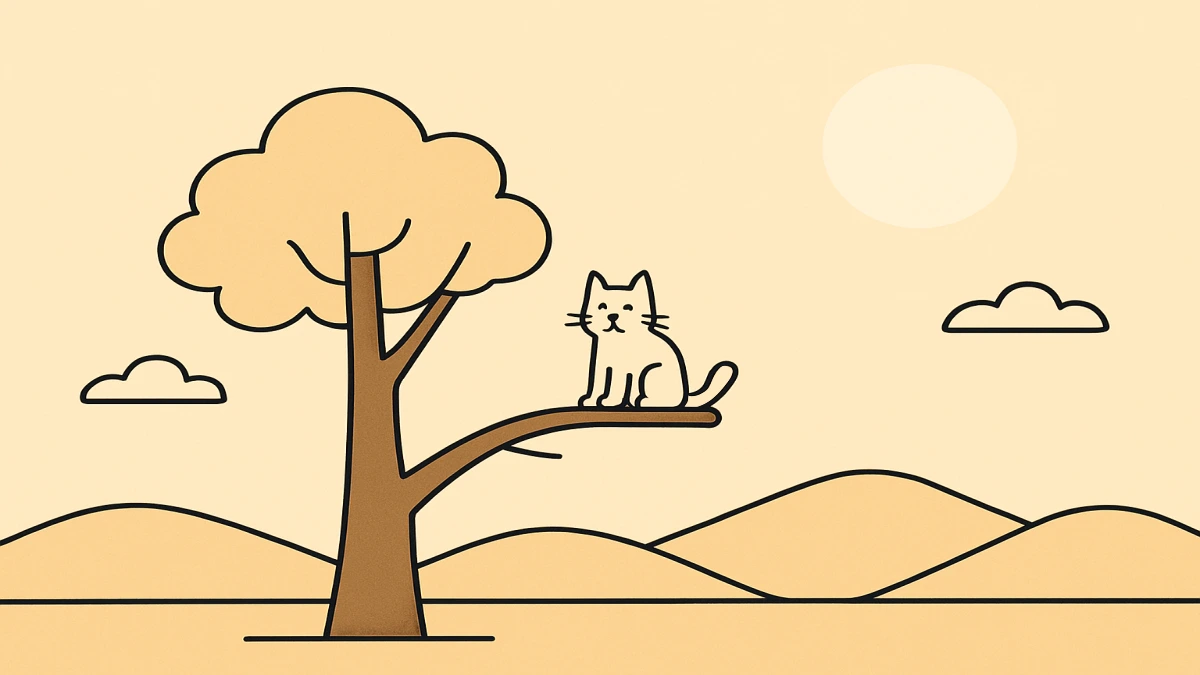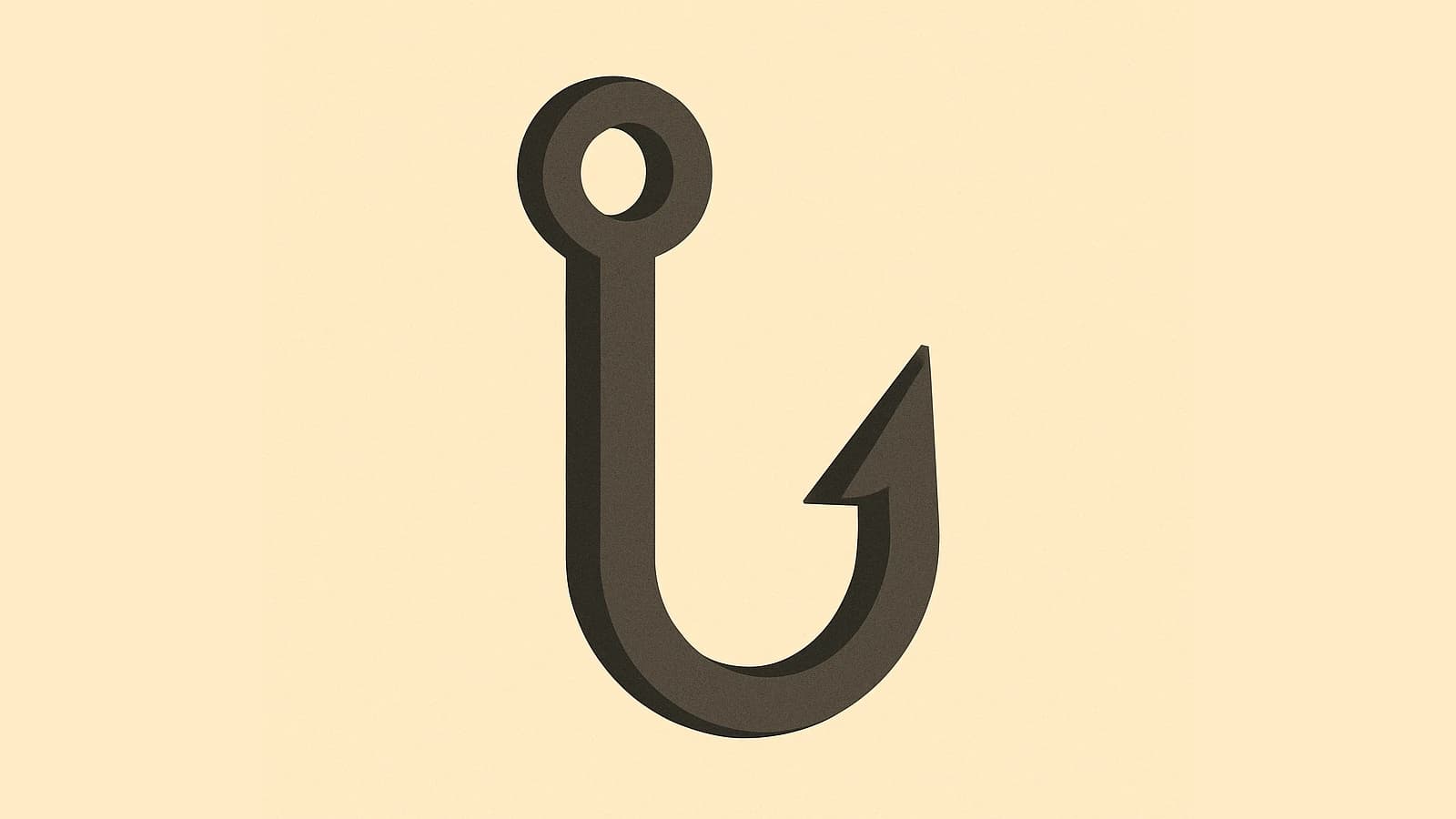The Ultimate Guide to Novel Story Structures

The paradox of the blank page is that its infinite possibilities can be paralyzing. You have a character, a spark of an idea, maybe even a dramatic ending, but how do you connect the dots? The answer lies in story structure. Far from a creative straitjacket, structure is the essential framework that guides your narrative, ensuring your plot progresses logically and your characters evolve meaningfully.
This guide will explore several foundational story structures and make the case for the best starting point for most aspiring novelists. Understanding structure doesn't limit your creativity; it gives you a map so you can write your story with confidence.
What Is Story Structure?
Think of story structure as the skeleton of your novel. It’s the underlying framework that dictates the flow and pacing of the narrative. The plot, in contrast, is the flesh and muscle. It's the specific events, conversations, and actions that make your story unique. You can have the most interesting plot points in the world, but without a solid structure to support them, the story can feel disjointed, aimless, or emotionally flat.
Why does it matter so much?
- It Creates a Satisfying Reader Experience: Humans are wired for patterns. A well-structured story taps into this by building tension, hitting key emotional beats, and delivering a resolution that feels earned.
- It Provides a Roadmap for Writers: When you’re lost in the "messy middle" of your draft, your structure tells you where you are and what needs to happen next to keep the story on track.
- It Ensures Proper Pacing: Structure helps you balance action with reflection, ensuring your story doesn't drag in some places or rush through important moments in others.
- It Makes Revision Easier: When your manuscript has good bones, editing becomes a process of refining and polishing rather than performing major reconstructive surgery.
It’s important to remember that structure is a flexible guide, not a rigid formula. It’s a tool to shape your story, not a cage to confine it.
Major Story Structure Types
While countless variations exist, most narrative structures are built on a few foundational models. Understanding them will help you see the common patterns that make stories work.
Three-Act Structure
Perhaps the most well-known framework, the Three-Act Structure has its roots in Aristotle's Poetics and is the backbone of modern screenwriting and commercial fiction.
- Act 1: The Setup (First ~25%): This is where you introduce your protagonist in their ordinary world, establish the stakes, and present the inciting incident that kicks off the main story. The act ends when the protagonist decides to engage with the central conflict.
- Act 2: The Confrontation (Middle ~50%): The longest act, this is where your protagonist pursues their goal, facing rising obstacles and complications. They learn new skills, meet allies and enemies, and are forced to adapt. This act often contains a midpoint shift where the stakes are raised dramatically. The notorious "saggy middle" can occur here if the conflict isn't escalating.
- Act 3: The Resolution (Final ~25%): The story races toward its climax. The protagonist faces their final confrontation, all plotlines converge, and the central conflict is resolved. The story then concludes with a short denouement showing the protagonist in their new normal.
Pros: It's intuitive, widely understood, and effective for a vast range of genres. Cons: The long second act can be difficult to pace, and without fresh twists, it can feel predictable.
The Hero's Journey
Popularized by Joseph Campbell, the Hero's Journey is a detailed, archetypal structure often found in myth, fantasy, and epic adventures. It follows a protagonist who goes on an adventure, wins a decisive victory, and comes home transformed.
The twelve stages include the Ordinary World, the Call to Adventure, the Refusal of the Call, Meeting the Mentor, Crossing the Threshold, Tests, Allies, and Enemies, Approach the Inmost Cave, the Ordeal (the central crisis), the Reward, The Road Back, the Resurrection (the climax), and the Return with the Elixir.
Pros: It creates stories with deep thematic resonance and powerful character transformation. Cons: Its archetypal nature can feel repetitive if not handled with originality, and it's not suited for all types of stories.
Five-Act Structure
Often associated with Shakespearean tragedy, the Five-Act Structure provides a more nuanced breakdown of a story's dramatic arc.
- Act 1: Exposition: Introduction of characters, setting, and conflict.
- Act 2: Rising Action: The conflict develops through a series of complications.
- Act 3: Climax: The turning point of the story, where fortunes reverse.
- Act 4: Falling Action: The consequences of the climax unfold.
- Act 5: Denouement/Catastrophe: The conflict is resolved, and a new order is established.
Pros: It allows for more complex turning points and a detailed exploration of the consequences of the climax. Cons: It's more complex to plot and is often better suited for literary fiction or character-driven tragedies.
Seven-Point Story Structure
Developed by author Dan Wells, this structure is a favorite among plot-driven writers because it encourages starting with the ending and working backward. This ensures a tight, causal chain of events.
The seven points are:
- Hook: The character’s starting point.
- Plot Turn 1: The event that moves the character into the main conflict.
- Pinch Point 1: Pressure is applied, showing the antagonist’s power.
- Midpoint: The character moves from reaction to action.
- Pinch Point 2: More pressure is applied, making the stakes personal.
- Plot Turn 2: The character gets the final piece of information they need to defeat the antagonist.
- Resolution: The final confrontation.
Pros: It’s an efficient way to plot, creating a story with clear momentum and causality. Cons: It’s less detailed than other structures and focuses more on plot than on nuanced character arcs.

For Beginners: Save the Cat!
While all structures are valuable, one stands out as a practical and empowering starting point for new novelists: the Save the Cat! beat sheet. Created by screenwriter Blake Snyder, this method breaks the Three-Act Structure into 15 concrete, actionable "beats." Its power lies in its specificity. Instead of a vague "rising action," it gives you clear milestones like the "Fun and Games" and "Midpoint" beats, complete with approximate page or percentage markers.
This clarity demystifies the plotting process, providing a balance between a structured framework and creative freedom. It’s a roadmap that helps you ensure your story has a compelling character arc, solid pacing, and the key moments readers expect from a satisfying narrative.
Why is it called Save the Cat!, you ask? Because the famous advice goes that you should have your protagonist perform an early heroic act to endear them to your readers. I.e. save a cat up a tree!
The 15 Save the Cat! Beats
Here’s a detailed breakdown of the 15 beats and what they accomplish in your novel.
- Opening Image (0-1%): A "before" snapshot of your protagonist and their world. It establishes the tone and shows what’s wrong in their life, even if they don't know it yet.
- Theme Stated (5%): A secondary character poses a question or makes a statement that hints at the story's central theme or the protagonist's internal journey.
- Setup (1-10%): You introduce the protagonist's world, showcase their flaws and skills, and establish the stakes. We see everything that needs to change.
- Catalyst (10%): The inciting incident. This is the telegram, the discovery, or the explosion that disrupts the protagonist's status quo and launches them into the story.
- Debate (10-20%): The protagonist hesitates. Should they go on this journey? Can they succeed? This section shows their reluctance to change.
- Break Into Two (20%): The protagonist makes the choice to accept the call to action. They step out of their comfort zone and into the upside-down world of Act 2.
- B Story (22%): A subplot begins, often a relationship with a new character (a love interest, mentor, or rival) who will help the protagonist learn the story's theme.
- Fun and Games (20-50%): This is the "promise of the premise"—the core of what your story is about. It's the detective gathering clues, the wizard learning magic, or the couple falling in love through a series of charming encounters.
- Midpoint (50%): A major event that raises the stakes. It can be a false victory (the protagonist thinks they've won) or a false defeat (they think they've lost everything). The fun and games are over.
- Bad Guys Close In (50-75%): The forces of antagonism (external and internal) regroup and apply mounting pressure on the protagonist, who is now on the defensive.
- All Is Lost (75%): The lowest point of the story. The protagonist suffers a major blow, often at the hands of the antagonist. It seems there's no way they can win. This often includes a "whiff of death"—the symbolic or literal death of an old way of being.
- Dark Night of the Soul (75-80%): In the aftermath of the All Is Lost moment, the protagonist processes their failure. They must dig deep and find a new strength or understanding.
- Break Into Three (80%): The "aha!" moment. Thanks to the lessons learned in the B Story and their own reflection, the protagonist formulates a new plan. They have synthesized their old self with their new knowledge.
- Finale (80-99%): The protagonist confronts the antagonist and resolves the central conflict. They apply the lessons they've learned, often blending the A Story (the external plot) and the B Story (the thematic relationship).
- Final Image (99-100%): An "after" snapshot that mirrors the Opening Image, showing just how much the protagonist and their world have changed.
Why These Beats Work
The Save the Cat! structure provides a rhythm that naturally creates momentum. It ensures the middle of your story has purpose, builds a character arc directly into the plot, and gives you clear checkpoints for both drafting and revision.
Some of you may already have a draft and are looking for ways to analyze its structure. This is where tools like Inkshift can help. Inkshift provides a detailed report on your story's structure (in addition to pacing, character development, prose quality, setting, and more) and assess whether it follows a natural arc. We won't spend too much time on Inkshift in this article, but if you'd like to learn how it works, check out this article.
How to Plot with Save the Cat!: A Practical Example
Let's apply these beats to a simple contemporary romance idea.
The Story Setup:
- Protagonist: Maya, a brilliant but controlling architect who is terrified of vulnerability and commitment after a bad breakup.
- Goal: Win the prestigious Sterling Prize for architecture.
- Theme: True partnership requires letting go of control.
Applying the 15 Beats:
- Opening Image: Maya works alone in her pristine, minimalist office late at night, perfectly arranging blueprints. The image is one of success and order, but also isolation.
- Theme Stated: Her sister, who is planning her wedding, says, "You can't blueprint a relationship, Maya."
- Setup: We see Maya's rigid daily routine, her avoidance of social events, and learn about the upcoming Sterling Prize competition, which she sees as the ultimate career validation.
- Catalyst: The competition announces a surprise rule change: all entrants must work with an assigned partner. Maya is paired with Jake, a charismatic and improvisational designer whose style is the opposite of hers.
- Debate: Maya furiously tries to get a new partner or a solo exemption. She argues with the committee and Jake, convinced he will ruin her chances.
- Break Into Two: With no other choice, she reluctantly agrees to the partnership, and they have their first tense brainstorming session.
- B Story: The B Story is Maya’s relationship with Jake. It's the internal journey she takes, compared to the external A story of the competition.
- Fun and Games: Maya and Jake clash and collaborate. We see scenes of them arguing over sketches, having late-night debates that turn into personal conversations, and slowly creating a design that is better than anything either could have done alone. Romantic tension builds.
- Midpoint: They submit their preliminary design and win the first round of the competition. Celebrating the win, they share a passionate kiss (a false victory).
- Bad Guys Close In: The pressure of the final round mounts. Jake wants more emotional intimacy, which makes Maya pull away and retreat into her controlling habits. Their creative conflicts become personal attacks.
- All Is Lost: During an argument, Maya accuses Jake of not being serious enough and sabotages their project. Jake, hurt, quits the partnership. Maya is now alone, with a broken design and a broken relationship. She is going to lose the competition.
- Dark Night of the Soul: Sitting alone in her office, just like in the opening image, Maya realizes that her fear of vulnerability has cost her both the prize and the first person she has connected with in years.
- Break Into Three: Her sister finds her and, through a heart-to-heart, helps Maya understand the theme. Maya has an idea—a way to fix the project and, hopefully, her relationship with Jake.
- Finale: Maya finds Jake and presents a new design that beautifully merges her structure with his improvisation. She apologizes, admitting her fear and her feelings for him. They work all night to finish the project and present it together. Whether they win or lose the prize no longer matters, because they have found their partnership.
- Final Image: Months later, Maya and Jake are in a slightly messy, vibrant studio, working together on a new project, smiling. The image is one of collaborative, happy connection.
Structure vs. Discovery: Finding Your Process
It's important to acknowledge that not every writer works this way. The writing world often talks about "plotters," who outline everything in advance, and "pantsers," who write by the seat of their pants, discovering the story as they go. This is a spectrum, and most writers fall somewhere in the middle.
Even if you’re a pantser, understanding structure is invaluable for the revision process. After you've written your "discovery draft," you can use a framework like Save the Cat! to analyze what you have, identify what’s missing, and shape your raw material into a powerful story. For a deeper look at these different approaches, you can explore our guide on choosing your writing process.
Conclusion
Story structure is a tool for empowerment, not confinement. For writers starting their first novel, the number of choices can be overwhelming. A clear structure like Save the Cat! provides clarity, confidence, and a proven path to a finished story. It helps you build a narrative with satisfying pacing, a compelling character arc, and resonant emotional beats.
As you gain experience, you might experiment with other structures, or even develop your own hybrid methods. But the fundamental principles will remain the same. The best structure is ultimately the one that helps you tell your story and complete your manuscript. So, download a beat sheet, grab some index cards, and start mapping out your novel. A solid framework will give you the freedom to be creative.

